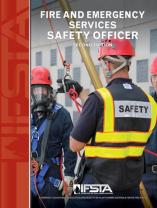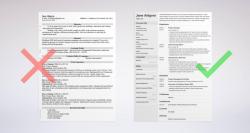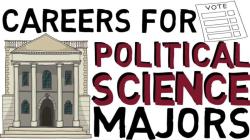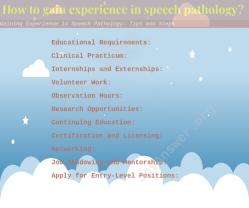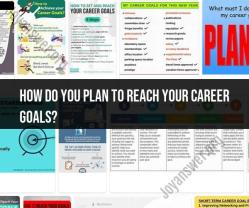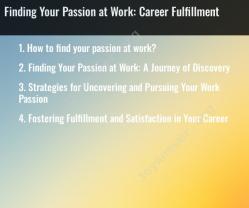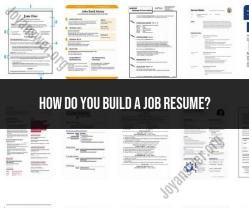What are the pros and cons of a job application?
Job applications are a standard part of the hiring process, and they serve as a way for employers to collect essential information from candidates. While job applications are a common and necessary step, they come with both advantages and disadvantages. Here are some pros and cons of job applications:
Pros:
Standardized Information:
- Pro: Applications provide a standardized format for collecting information, making it easier for employers to compare candidates objectively.
Efficient Screening:
- Pro: Applications help employers quickly screen and eliminate candidates who do not meet basic requirements, streamlining the initial stages of the hiring process.
Consistency:
- Pro: A standardized application process ensures that all candidates provide the same information, promoting fairness and consistency in the evaluation process.
Legal Compliance:
- Pro: Job applications help employers collect necessary legal and compliance-related information, such as eligibility to work, without running afoul of anti-discrimination laws.
Structured Reference Points:
- Pro: Applications often include specific questions about qualifications and experience, providing structured reference points for evaluating candidates.
Documentation:
- Pro: Completed applications serve as documentation of a candidate's interest and qualifications for the position, which can be valuable for record-keeping and legal purposes.
Cons:
Limited Insight:
- Con: Job applications may provide limited insight into a candidate's personality, soft skills, and other qualitative attributes that are crucial for certain roles.
Time-Consuming:
- Con: Filling out detailed applications can be time-consuming for candidates, potentially deterring some qualified individuals from applying.
Potential for Bias:
- Con: Despite efforts to standardize, there is still a potential for bias in the evaluation of applications, as unconscious biases may influence decision-making.
Barriers to Entry:
- Con: Complex or lengthy applications may act as barriers to entry, especially for candidates who may not have the time or resources to complete them.
Overemphasis on Credentials:
- Con: Applications may overemphasize academic and professional credentials, potentially overlooking candidates with valuable skills and experiences gained through non-traditional paths.
Incomplete or Inaccurate Information:
- Con: Some candidates may provide incomplete or inaccurate information on applications, either intentionally or unintentionally, which can complicate the screening process.
Limited Flexibility:
- Con: Standardized applications may lack flexibility to accommodate candidates with unique circumstances, diverse backgrounds, or alternative qualifications.
Impersonal:
- Con: The application process can feel impersonal to candidates, potentially leading to a negative candidate experience and impacting employer branding.
In conclusion, while job applications are a fundamental part of the hiring process, it's essential for employers to strike a balance between collecting necessary information and providing a positive experience for candidates. Combining applications with additional assessment methods, such as interviews and skills tests, can help create a more comprehensive evaluation process.
What are the pros and cons of a job application, and how do they impact the hiring process?
Pros:
- Efficiency: Job applications help employers to efficiently screen candidates and identify those who are most qualified for the position.
- Standardization: Job applications provide a standardized way for applicants to present their qualifications and experience. This allows employers to compare candidates more easily.
- Information gathering: Job applications allow employers to gather information about applicants' skills, experience, education, and work history. This information can be used to make a more informed hiring decision.
Cons:
- Bias: Job applications can introduce bias into the hiring process. For example, employers may be more likely to hire candidates who have attended certain schools or have worked for certain companies.
- Incompleteness: Job applications may not provide employers with a complete picture of an applicant's qualifications and experience. For example, an applicant may have relevant skills and experience that are not listed on the job application.
- Time-consuming: Job applications can be time-consuming for both employers and applicants. Employers have to spend time reviewing applications, and applicants have to spend time completing them.
How does a job application serve as a tool for both employers and applicants, and what considerations should be taken into account?
Job applications serve as a tool for both employers and applicants in a number of ways.
For employers:
- Job applications help employers to identify qualified candidates for the position.
- Job applications help employers to screen candidates and identify those who are most likely to be a good fit for the company culture.
- Job applications help employers to gather information about candidates' skills, experience, education, and work history. This information can be used to make a more informed hiring decision.
For applicants:
- Job applications allow applicants to present their qualifications and experience to employers in a standardized format.
- Job applications allow applicants to highlight their skills and experience that are most relevant to the position.
- Job applications allow applicants to make a good first impression on employers.
Considerations for employers:
- When designing a job application, employers should carefully consider the information that they need to gather from candidates.
- Employers should also consider the length of the job application. A long and complex job application may deter qualified candidates from applying.
- Employers should review job applications promptly and provide feedback to candidates.
Considerations for applicants:
- When completing a job application, applicants should be sure to carefully read the instructions and answer all questions accurately and completely.
- Applicants should also tailor their resume and cover letter to the specific job they are applying for.
- Applicants should proofread their job application carefully before submitting it.
Are there best practices or strategies for maximizing the effectiveness of a job application?
There are a number of best practices and strategies that applicants can use to maximize the effectiveness of their job applications:
- Tailor your resume and cover letter to the specific job you are applying for. Highlight the skills and experience that are most relevant to the position.
- Be specific and provide examples of your skills and experience. Don't just list your skills and experience - explain how you have used them to achieve success.
- Use keywords throughout your job application. This will help your application to get noticed by applicant tracking systems (ATS).
- Proofread your job application carefully before submitting it. Typos and grammatical errors can make you look unprofessional.
By following these best practices and strategies, applicants can increase their chances of success in the job application process.




